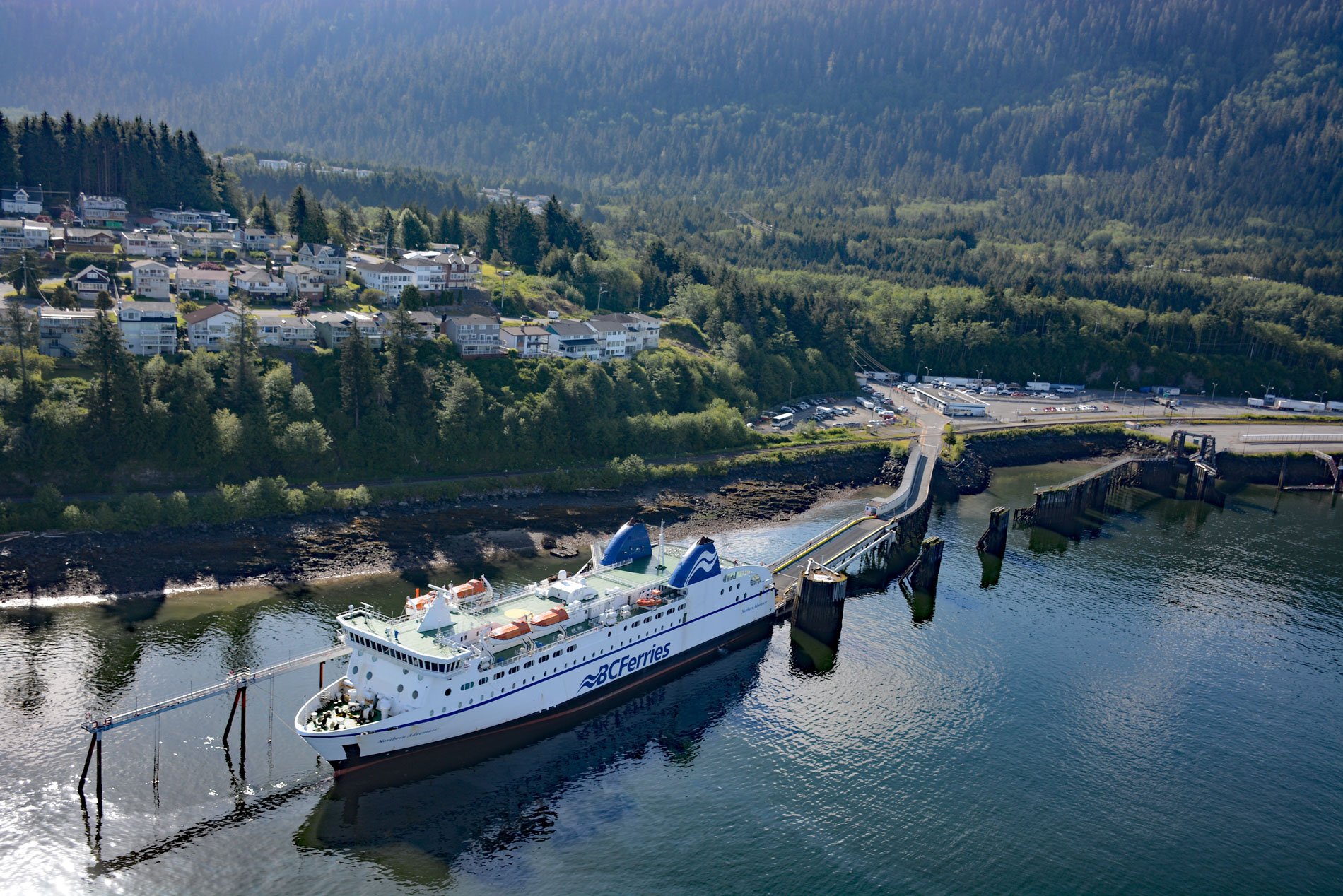Prince Rupert is a port community on Kaien Island, just north of the mouth of the Skeena River, and linked by a short bridge to the British Columbia mainland, about 465 miles (748 km) northwest of Vancouver and 90 miles (145 km) southeast of Ketchikan, Alaska. The city is along the island’s northwestern shore, fronting on Prince Rupert Harbour. Kaien Island has an area of about 11,000 acres (4,452 ha) and is about 9 miles (14.5 km) long and 4 miles (6.4 km) wide. The island consists of a central mountain ridge, surrounded by coastal lowlands, the dominant central peak is Mount Hays with an elevation of 2,323 feet (708 m). Kaien Island is central to the traditional territories of the Tsimshian First Nations and has been permanently settled for more than 5,000 years. In 1834, the Hudson’s Bay Company established a trading post near the southern entrance to Portland Canal, a narrow waterway separating Canada from Russian America. The post was called Fort Simpson and later renamed Port Simpson. The purpose of the fort was to undermine Russian dominance of the maritime fur trade along the Pacific Coast. Nine Tsimshian villages moved to the surrounding area, and the influence of Coast Tsimshian on Kaien Island declined.
In 1903, Canadian legislation passed to construct the Grand Trunk Pacific Railway, a transcontinental railroad running from Winnipeg to the Pacific coast. Initially, Port Simpson was the chosen terminus since it was nearer to Asia than Vancouver. At about the same time, political friction arose in Canada over the Alaska boundary decision that favored U.S. interests, and in response, U.S. President Theodore Roosevelt threatened to send an occupation force to the District of Alaska. Prime Minister Wilfrid Laurier preferred a more southerly location for the terminal, and Kaien Island was selected over Port Simpson and Port Essington for being more defensible. The railroad purchased the First Nations reserve of 14,000 acres (5,666 ha) on Kaien Island and also received a land grant of 10,000 acres (4,047 ha) from the government. A post office was established on November 23, 1906, and land clearing and surveys for a townsite started that same year. Provincial funding financed plank sidewalks, roads, sewers, and water mains. By 1909, the town possessed several stores including groceries, butchers, banks, hotels, hardware, clothing, furniture, dry goods, fruit and cigar stores, and several lodging houses and restaurants. Prince Rupert was incorporated on March 10, 1910, and named after Prince Rupert of the Rhine, the first governor of the Hudson’s Bay Company.
Railroad construction east from Prince Rupert was contracted to Foley, Welch and Stewart. They operated five steamboats from Prince Rupert to supply construction camps along the Skeena River. Construction of the transcontinental railroad was completed in 1914, with a spur line to Vancouver. Beginning in 1910, a Grand Trunk Pacific steamship service operated from Prince Rupert and built a massive dock in Seattle. The first ship, SS Prince Albert was a steel-hulled vessel that traveled as far as Vancouver and Victoria. The SS Prince John traveled to the Queen Charlotte Islands. The SS Prince George and SS Prince Rupert operated a weekly service from Seattle to Victoria, Vancouver, Prince Rupert, and Anyox and could travel at 18 knots (33 kph) and carry 1,500 passengers. The vision was for coastal shipping to mature into a trans-Pacific line. However, the city of Vancouver flourished as a west coast port while Prince Rupert languished. In 1919, the Grand Trunk Pacific Railway defaulted on construction loans to the federal government, and in July 1920 the railway was nationalized and merged into the Canadian National Railway. During World War II, a spur road off the Alaska Highway connecting to Prince Rupert was needed and the section between Terrace and Prince Rupert was completed by the U.S. Army Corps of Engineers as part of the Canol Project to move thousands of allied troops and supplies to the Aleutian Islands and the Pacific theater. The port facilities at Prince Rupert were also expanded to increase freight handling capacity. Facilities constructed included warehousing, office space, a cold storage plant, and the existing waterfront wharfage was doubled. The construction program lasted over two years from March 1942 to March 1944. The military road along the Skeena River is now the western terminus of Trans-Canada Yellowhead Highway. Prince Rupert is currently the land, air, and water transportation hub of British Columbia’s North Coast. The port facility is vital to the local economy and includes terminals for BC Ferries, as well as a container port, coal and grain bulk cargo, and a cruise ship dock. Read more here and here. Explore more of Prince Rupert and Kaien Island here:

